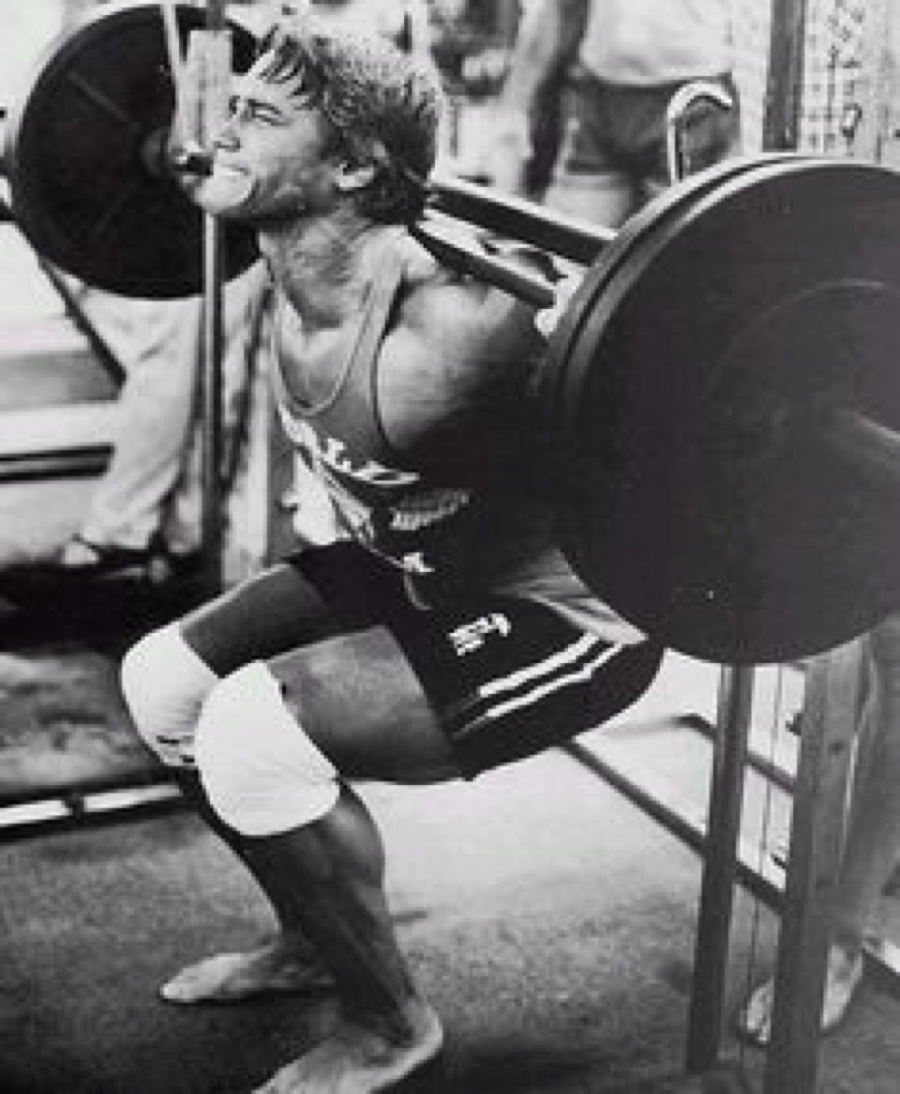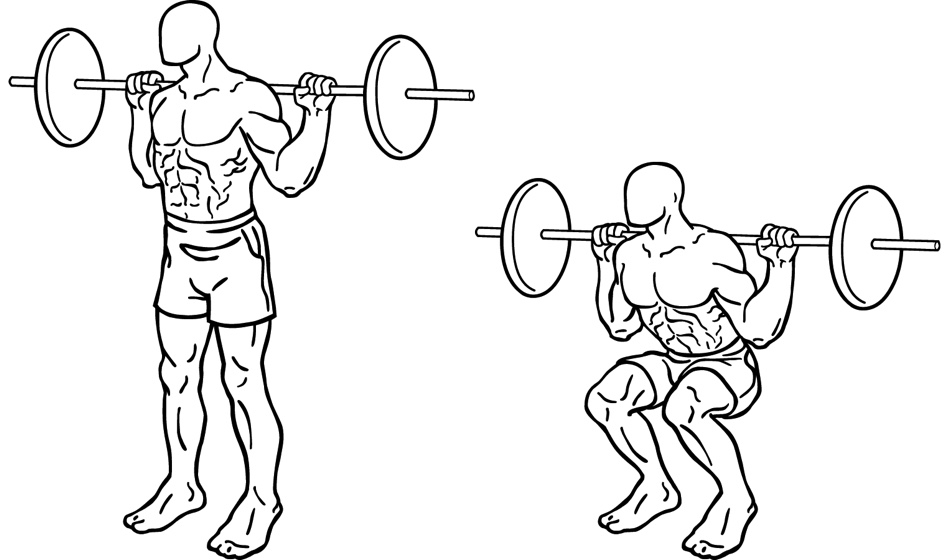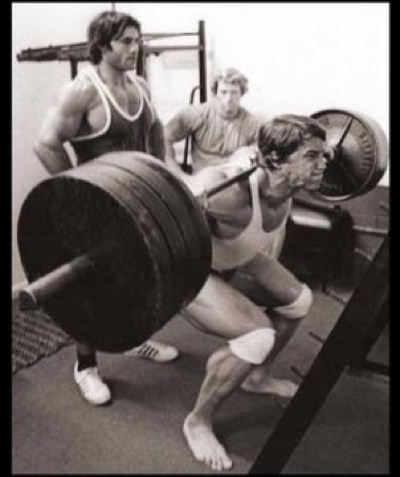
Arnold Back Squatting Barefoot
How to Squat Barefoot
Table of Contents
I was having a conversation with one of the chaps at the gym and he asked me how to squat barefoot. Deciding to squat barefoot can be a bit daunting so I did a little research. Here is how to do it safely and properly.
How to barefoot squat: Your feet should be shoulder width with the Barbell on your back. look at the horizon during the movement. Firm Grip on the bar, tense your back during the entire movement, then squat. Keep your knees tracking over your feet. At the bottom of the squat stand back up, pushing upwards on the barbell.
Now let us outline what this all means and what you need to do about it.
About Squatting
As I have said in my other articles:
The Squat is often referred to as the King of Exercises. No other exercise works the entire body from head to toe. The squat has over 40 variations of the same basic movement and principles, with each variation slightly modified to tweak ever so slightly the angles, levers, and muscle groups targeted in the movement.
All forms of squatting provide immense strength benefits to the thighs, hips and buttocks, and to a lesser extent the hip flexors and abdominals.
You will always need to squat one way or another in daily life. If you are sitting down, you must perform a squat. If you go to the bathroom, you must squat. Losing the ability to do this movement is losing the ability to live independently.
Barefoot Variations
Decide how you will approach barefoot, there are 3 basic options that come to mind. These are:
- Barefoot no shoes
- Barefoot with socks
- Barefoot with minimalist/zero drop shoes
There is more detail on this in my other post check it out here. It’s important to note that there is no right or wrong. The key is to understand what you are most comfortable with and proceed.
Warm up
Do simple drills to get your core temperature up.
Here is an example I use most days that I want to lift.
Short run no more than 800M, to begin with, followed by 2 x Rounds of
-
10 x Pushups
-
10 x Air squats
-
10 x Walking Lunges
How to do the Barbell Squat
Getting the movement correct in the first place is key. Loading heavier weight on the bar will come later as there are many variables to come to grips with first.
- Place the bar on your back making sure to avoid your cervical bone in the neck and rest it on the muscular soft tissue just above the shoulder blades.
- Grip the bar just outside the shoulders with a firm grip, pointing your elbows to the ground.
- Stand upright, with your eyes looking into the horizon(neutral head position). Find a point in the distance and fix your eyes on that point throughout the movement.
- Keep the majority of your weight on your heels. Listing your big toes is a good cue to make this happen.
- Descend with gravity, ensuring that your back is tensed (i.e. keep back in a tight lumbar and thoracic extension). Keeping your back in extension keeps your body in an anatomically correct position to distribute the forces of the weight across the vertebra discs. This keeps you in a safe position and prevents anterior or posterior squeezing of discus resulting in potential injury. Make sure you are in an upright position do not fold forward.
- Use the bounce out of the bottom. The bounce does not involve any portion of the knee, it happens when the hamstrings, glutes, and adductors reach their normal range of motion. The bounce out of the bottom is the correct use of the stretch reflex. Once you get the bounce out of the bottom of the movement, it is closely followed by the hard drive upward of the hips.
- Ensure your chest doesn’t want to collapse on return, by keeping good posture, return to start, driving the force up through the bar. This is a simple trick to the Central Nervous System that makes the weight feel lighter. Push up to go up.
- On return to the start point check that your hips are fully opened.

Set up for the back squat
(Image credit for squat diagram: here)
Squat Variations
Air Squat
This is a barefoot staple exercise, master this and the rest of the variations become a lot simpler. Start by standing in the beginning squat position with your feet hip-width apart, toes pointing forward, neck straight, and abs tight. Hold your arms out in front of you—straight with palms facing down.
Bend your knees and slowly lower yourself down until the tops of your thighs are parallel to the ground (for the ATG variation see below). Push your bottom backward, as if you were sitting on a chair. Return to standing.
ATG Squat
The Ass To Grass Squat (ATG) is the same as the air except that your thighs go past parallel and your bottom almost touches the floor. Hence the name of the movement.
Goblet Squat
Hold a dumbbell or kettlebell (upside down) to your chest with both hands. Imagine its a chalice filled with the elixir of life that cannot be spilt. Perform a basic Air squat without spilling a drop. Keep it close to your chest and steady. Return to the upright position.
Barbell Front Squat
Begin the movement with the bar positioned in front of you. Lift it up and place it on the front of your shoulders with your fingertips back toward you under the bar. Make sure your elbows a raised high with your triceps parallel to the ground. Keep your head up and back straight, squat down as far as you can go comfortably. Return to standing position.
Barbell Back Squat
This is the squat detailed the how to barefoot squat section above. Remember, even though squatting feels like a basic move, when you add weight you increase the risk of injury.
Overhead Squat
This one of the hardest of the barbell squats to do. It’s a little bit easier to do barefoot this is due in part to the strength, coordination, and balance required to hold a barbell overhead while maintaining a good squat. Stand in a wide stance and lift a weight bar straight up over your head.
Hold the barbell in as wide a grip as possible, keeping the bar above you directly overhead, slowly perform the basic squat. Return to the standing position.
Barbell Squat Press
Perform a barbell front squat. As you return to the standing position, use your shoulders to press the bar up over your head. You can also do this holding a set of Kettlebells in each hand.
Farmer Squat
Start at the beginning of the air squat position, holding a Kettlebell in each hand. Tighten your core and back. Look into the horizon and Perform a basic squat keeping the weights outside your legs. Return to the standing position.
Squat With Shoulder Press
Begin in a wide stance with your toes pointing forward and a kettlebell in each hand. Squat down with the kettlebells on the inside of your legs, almost touching the ground. As you stand back up, press the dumbbells overhead.
Pistol Squat
This is a bodyweight squat that is a lot more advanced. It can be tricky to master but the results are impressive. From a beginning squat position, stretch out one of your legs straight out in front of you, arms also in front and parallel to your outstretched leg.
Slowly squat all the way down until your butt is almost to your heel and your lifted leg is fully extended in front of you with the foot hovering a few inches above the floor. Stand back up without falling over or using your lifted leg.
Single-Leg Squat
This focuses your squat on one leg at a time helping to even out muscular imbalances. Start at the beginning of the basic squat position. Lift any left leg up, bending the knee slightly to get your foot off the ground. You can hold your raised foot slightly in front or behind you depending on whatever feels more steady. Using your standing leg, lower yourself down as far as is comfortable. Return upright. Try not to put your left foot down between reps; you can use a wall or chair for support if needed.
Wall Squat
Also called the angle 90 Squat. Perform this squat by standing with your back against a wall and your feet hip-width apart. Lower down until your thighs are parallel to the ground and your back is flat against the wall. Don’t rest your arms on your legs or the wall. Now hold. Keep holding.
That wraps it up, now you have all you need to get barefoot squatting.
Remember to do this safely whichever barefoot form you choose to use. Continue to build up for there and we will move onto the next core lifting movement the Deadlift. have a read over here.
